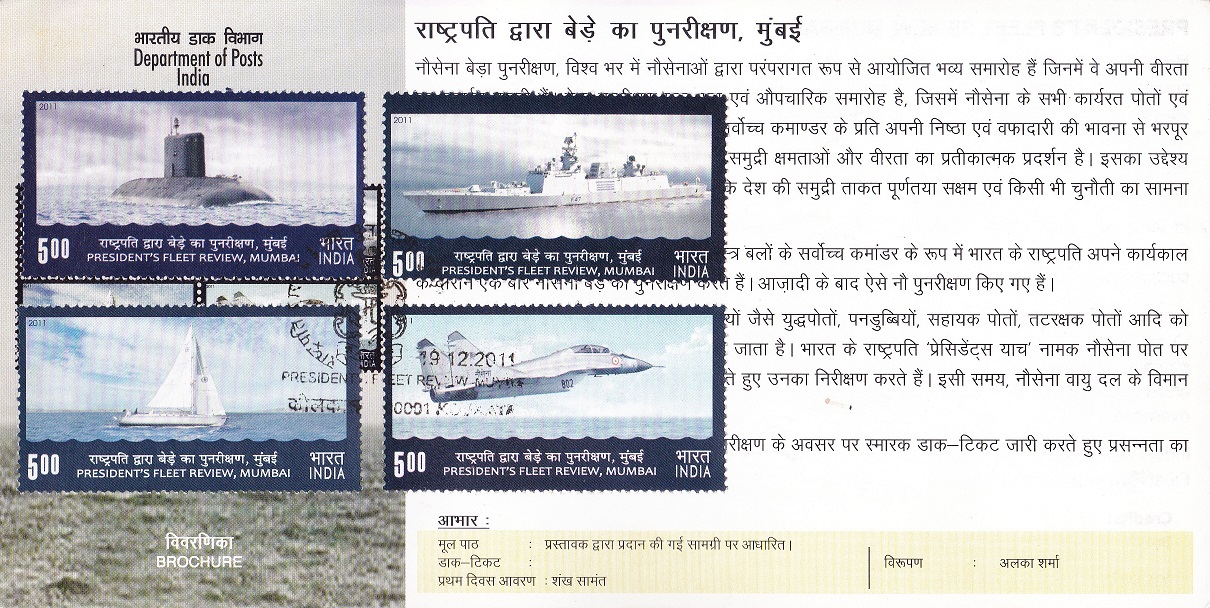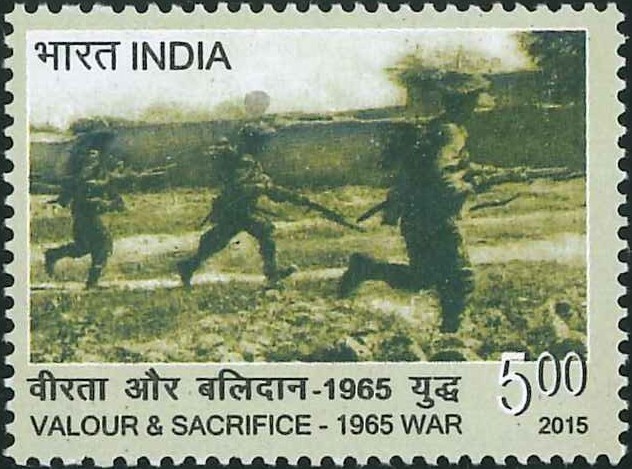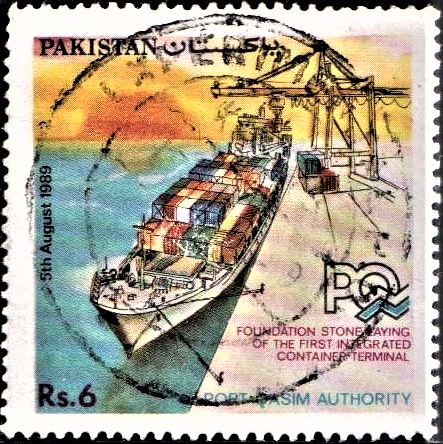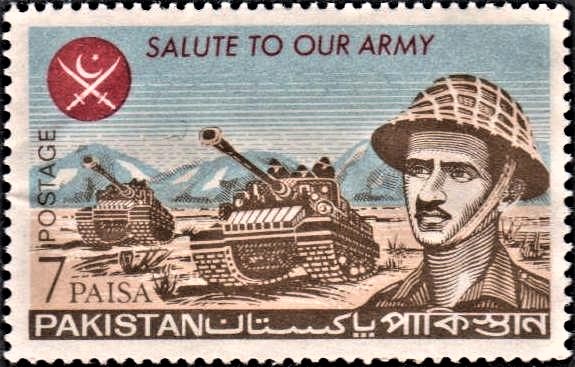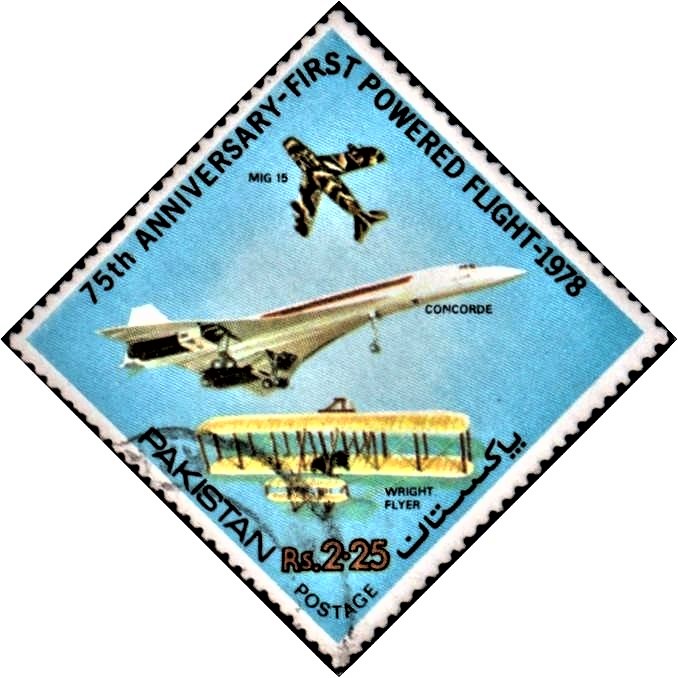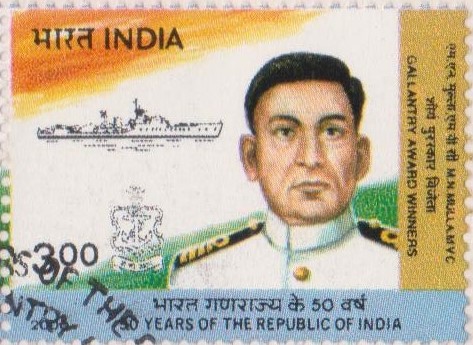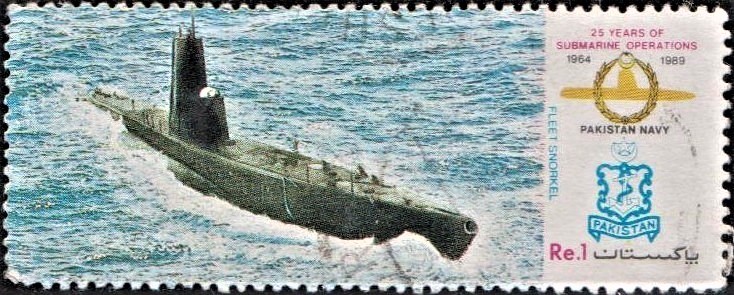
Pakistan Navy Submarine Force
A set of three commemorative postage stamps on the 25 Years of Submarine Operations (1964–1989) : Pakistan Navy Submarine Force – A Resume Background :
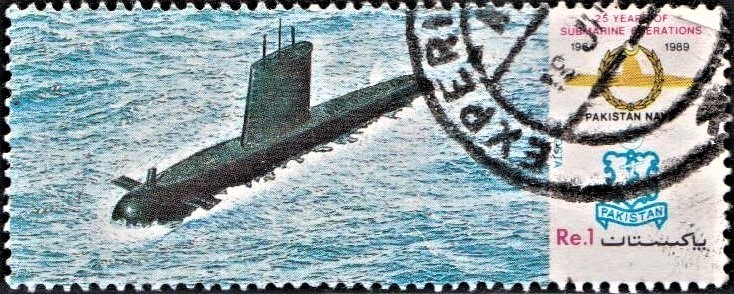
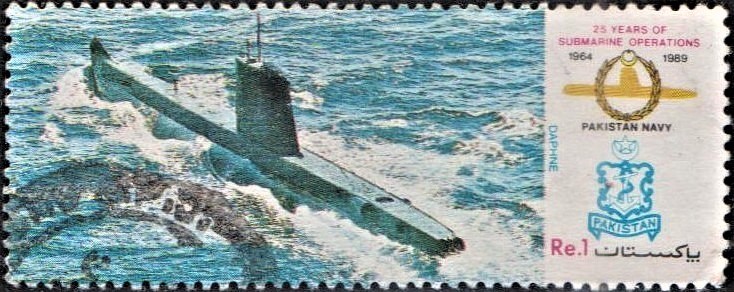
 Issued by Pakistan
Issued by Pakistan
Issued on Jun 1, 1989
Issued for : To commemorate the 25 years of Pakistan Navy Submarine Service, Pakistan Post Office is issuing three stamps Re. 1/- denomination each on 1.6.1989.
Designer : Adil Salahuddin, Chief Designer (PSPC)
Type : Stamps, Postal Used
Denomination : Re. 1/- each design
Colours : Multi colour
Size of Stamp :61.5 x 24 mm
Size of Print : 61.5 x 24 mm
Perforation : 13C
Quantity : 500,000 each design
Number of stamps in a sheet : 60 (sixty) (Se-tenant)
Process of Printing : Litho Offset
Printer : Pakistan Security Printing Corporation
About :
- The Twentieth century witnessed the advent of a new type of naval weapon carrier – the submarine. This immediately caught the fancy of naval strategists and during the two World Wars established itself as a vital component of any effective naval force. The Second World War saw extensive submarine warfare, and thereon submarines became an integral part of any effective naval force.
- Broadly there are two main type of submarines – the nuclear powered submarines and conventional diesel-electric submarines. The nuclear powered submarines being larger in size can carry long range ballistic missiles. These are maintained by the five major superpowers only. Smaller nuclear powered submarines can be used for other missions like anti-shipping and anti-submarine warfare. Conventional diesel-electric submarines are employed on a variety of missions including anti-shipping, anti-submarine warfare, mining, landing and recovery of marine commandos, photography and reconnaissance etc.
- The main advantage of a submarine is that she can operate in enemy controlled waters due to her virtue of being able to remain undetected, in order to operate underwater a submarine has a strengthened steel pressure hull that provides protection from water pressure to the crew, machinery and equipment. Above the submarine hull is a conning tower or sail structure which serves as the command post and houses tracking periscopes, radar and radio antenna, ESM mast and the snorkel tube, which helps the submarine to get fresh air for battery charging while remaining submerged.
- A submarine submerges by flooding her ballast tanks to obtain a neutral buoyancy and then dives by forward motion coupled with the use of diving planes, somewhat like small wings. To surface, the submarine uses the forward motion and the planes supplemented by expulsion of water out of the ballast tanks by injecting compressed air into them.
- History of Pakistan Navy Submarine ForcePakistan Navy made a very modest beginning in 1947 when only a few old ships were transferred to it from the Royal Indian Navy. It received a few more ships in the following years. It was identified very early on, that in order to have an effective deterrence capability against any potential aggressor the navy shall require to have a submarine arm. It was in 1964 that the navy took this historic step with the acquisition of the first submarine – PNS GHAZI which was commissioned into service on 01 June 1964. This was an ex-US Navy ‘Fleet Snorkel’ class submarine of World War II vintage. Nevertheless it laid the foundation for the submarine service vis-a-vis training of crews. She took an active part in the Rann of Kutch crisis and the 1965 war. She was instrumental in denying the enemy from threatening our maritime interests.
Pakistan Navy fully realising the immense deterrence potential that a submarine possesses had by now decided to build a full fledged submarine force. After careful study of various options, PN selected the French ‘Daphne’ class design as it was most suitable for our operating conditions. At that time it was also the most technically advanced yet cost effective conventional submarine available.
Pakistan Navy signed a contract for purchase of 3 ‘Daphne’ class submarines from France and these joined the PN Fleet in 1969-70. The submarines were named HANGOR, SHUSHUK and MANGRO. These submarines proved their worth during the 1971 war, when PNS HANGOR sank the Indian Navy frigate INS KHUKRI and damaged another. This was the first occasion following the Second World War when a submarine sank a ship and that also an anti-submarine frigate.
For their acts of courage and devotion to duty officers and men of the submarine squadron have the proud privilege of being decorated with seven Sitara-e-Jurrat and seven Tamgha-e-Jurrat. This is the highest number of operational gallantry awards given to a single arm of the Pakistan Navy.
The old submarine GHAZI was unfortunately lost off Vishakhapatnam before the commencement of hostilities in a yet unexplained accident. In performing her task she had offered the supreme sacrifice in defence of the homeland.
In 1977 the fourth ‘Daphne’ class submarine joined the PN Fleet. This was bought from the Portuguese Navy and was extensively refitted in France prior to taking over by Pakistan Navy. This submarine was named PNS/M GHAZI in memory of the one lost during the 1971 war.
Feeling the need for further extension of the submarine squadron, Pakistan Navy purchased two ‘Agosta’ class submarines in 1978, also from France. These were named HASHMAT and HURMAT and arrived in Pakistan in 1979 and 1980 respectively.
- CapabilitiesThe Daphne class submarines have a submerged displacement of 1043 tons and have a submerged speed of upto 16 knots. They can stay at sea for prolonged periods. The submarines carry various sensors and 12 torpedoes. They are manned by a crew of 54. These submarines have two 450 KW diesel generators and two 800 HP propulsion motors driving one propeller shaft each.
The Agosta class submarines are larger in size and have an advanced design. They carry 20 torpedoes and have sophisticated sensors. They have a submerged displacement of 1740 tons and can achieve submerged speed of upto 21 knots. They carry a 60 men crew. They have two 850 KW diesel generators, one 3500 KW main propulsion motor and one 30 KW cruising motor driving one shaft.
All the PN submarines have been modified from time to time to keep them abreast of the rapid technological developments. The latest addition has been the capability to launch sub-surface to surface anti-ship missiles which have given them an effective deterrence capability. They can now engage the enemy at much longer ranges.
- OrganisationThe Pakistan Navy Submarine Force consisting of 2 ‘Agosta’ and 4 ‘Daphne’ class submarines is placed under the command of a squadron commander known as ‘Commander Submarines’ (COMSUBS). COMSUBS is in turn responsible to the Commander Pakistan Fleet (COMPAK), who commands all the sea going units of the PN Fleet. A submarine base, PNS ABDOZE also functions under COMSUBS to provide support facilities to the submarines. A Submarine School looks after all the training requirements of the submarine squadron.
All types of repairs and maintenance on submarines is carried out locally. Extended periodic refits/overhauls are also done locally.
- (Contributed by a Naval Observer)
- Issued by The Director General, Pakistan Post Office Department, Islamabad.


